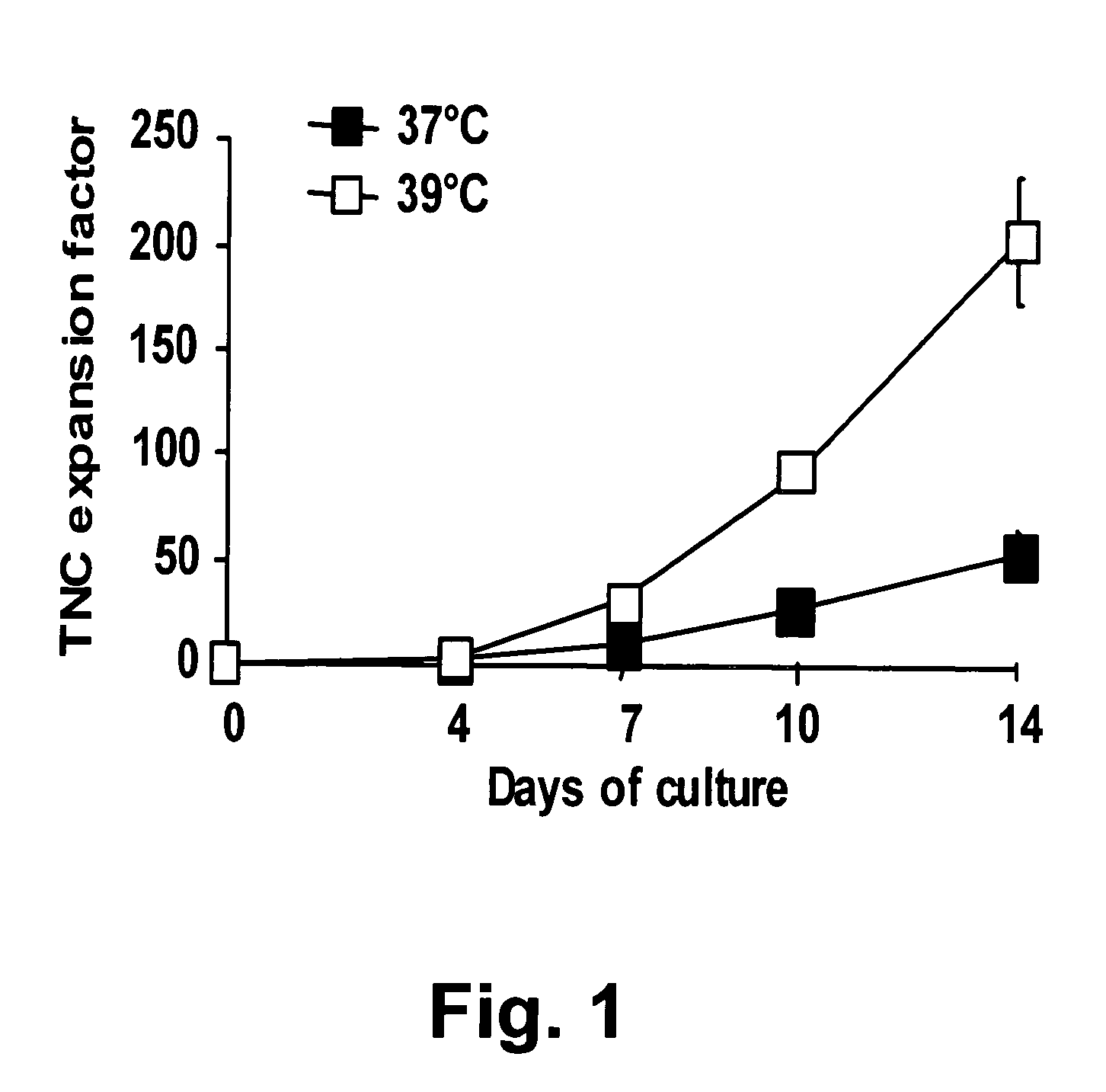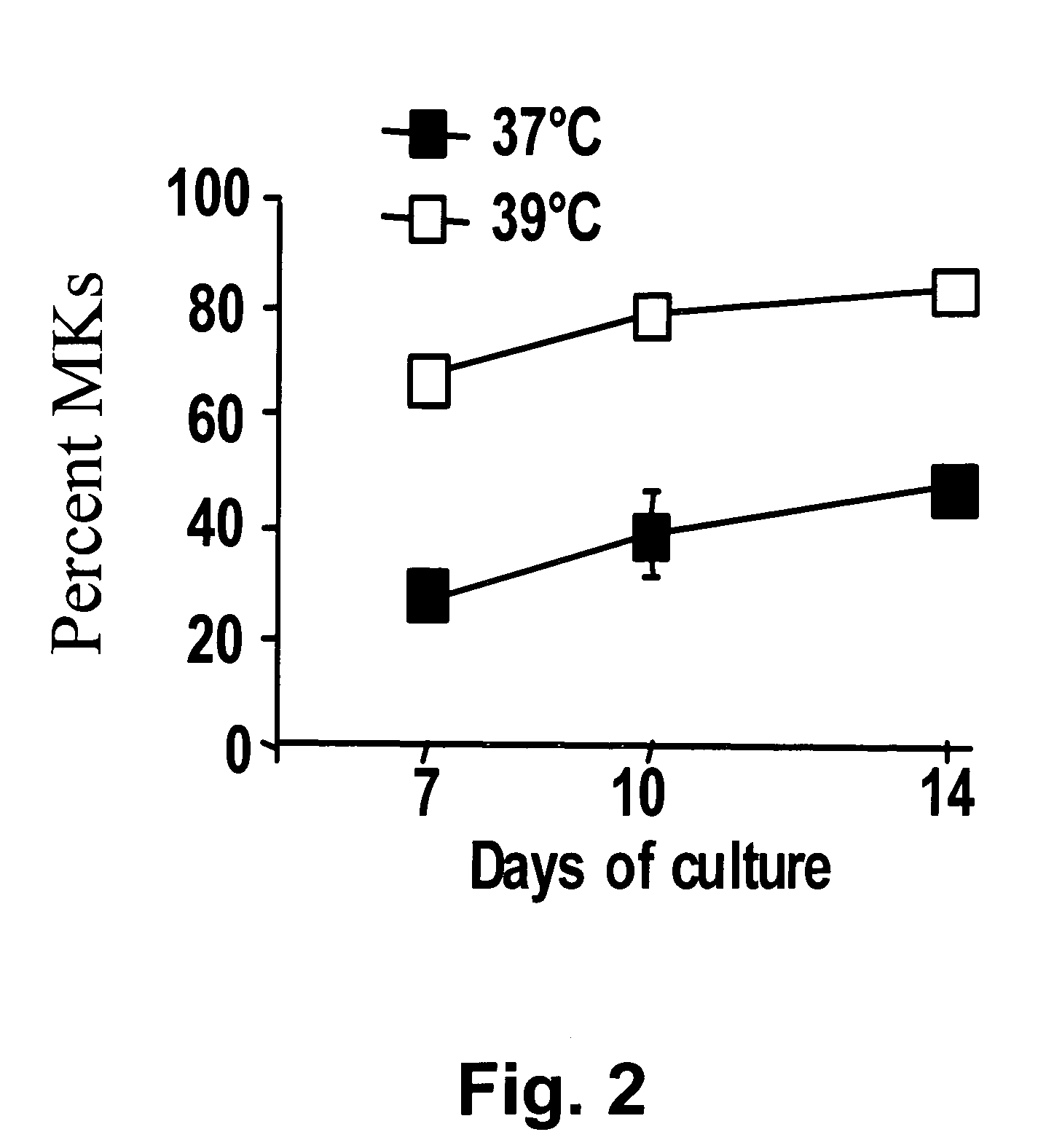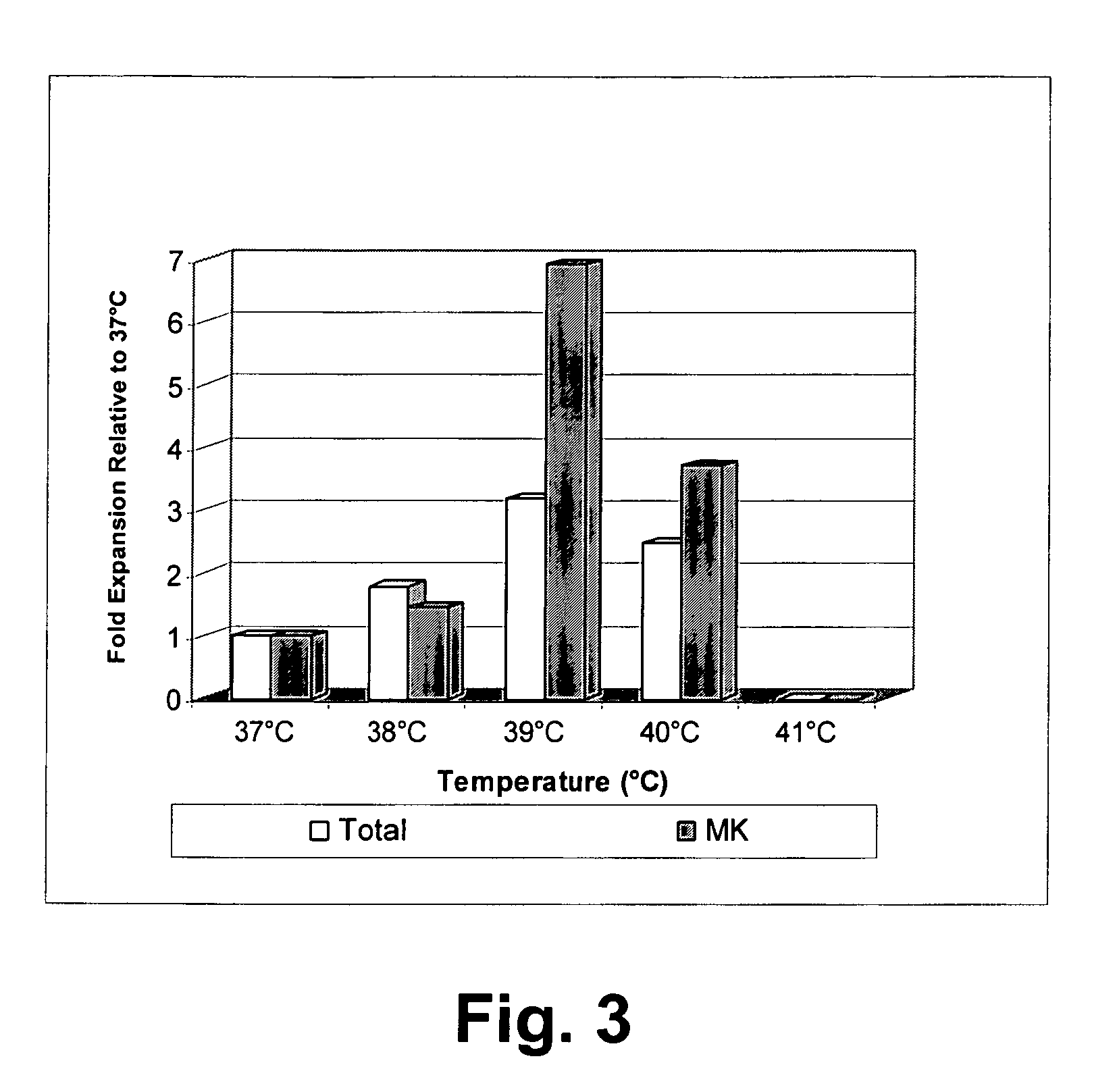Method of expanding cord blood cells
a cord blood cell and cell technology, applied in the field of cord blood cell expansion, can solve the problem of not being able to rule out the direct possible effect of hyperthermia on stem/progenitor cells, and achieve the effect of better platelet production and cell yield
- Summary
- Abstract
- Description
- Claims
- Application Information
AI Technical Summary
Benefits of technology
Problems solved by technology
Method used
Image
Examples
Embodiment Construction
[0017] In accordance with the present invention, there is provided a new method of culturing megakaryocyes under standard conditions but for the temperature at which the culture is maintained or made. The temperature in accordance with the present invention is preferably set to 39° C. instead of 37° C. as is currently being done in the art. However, it is clear from the data and figures reported herein that a temperature above 37° C. and below 41° C. is beneficial to the culture. Accordingly, it is intended to cover a temperature range varying from (but excluding) 37° C. to less than 41° C., and preferably from 38° C. to 40° C. Although one skilled person in the art will appreciate that a temperature of 41° C. is not useful in accordance with the present invention, the skilled person will be apt without difficulty and undue experiments to determine a temperature below 41° C. at which culture can still be made (with the same benefit) as in the present invention. It is thus not the in...
PUM
| Property | Measurement | Unit |
|---|---|---|
| temperature | aaaaa | aaaaa |
| temperature | aaaaa | aaaaa |
| temperature | aaaaa | aaaaa |
Abstract
Description
Claims
Application Information
 Login to View More
Login to View More - R&D
- Intellectual Property
- Life Sciences
- Materials
- Tech Scout
- Unparalleled Data Quality
- Higher Quality Content
- 60% Fewer Hallucinations
Browse by: Latest US Patents, China's latest patents, Technical Efficacy Thesaurus, Application Domain, Technology Topic, Popular Technical Reports.
© 2025 PatSnap. All rights reserved.Legal|Privacy policy|Modern Slavery Act Transparency Statement|Sitemap|About US| Contact US: help@patsnap.com



